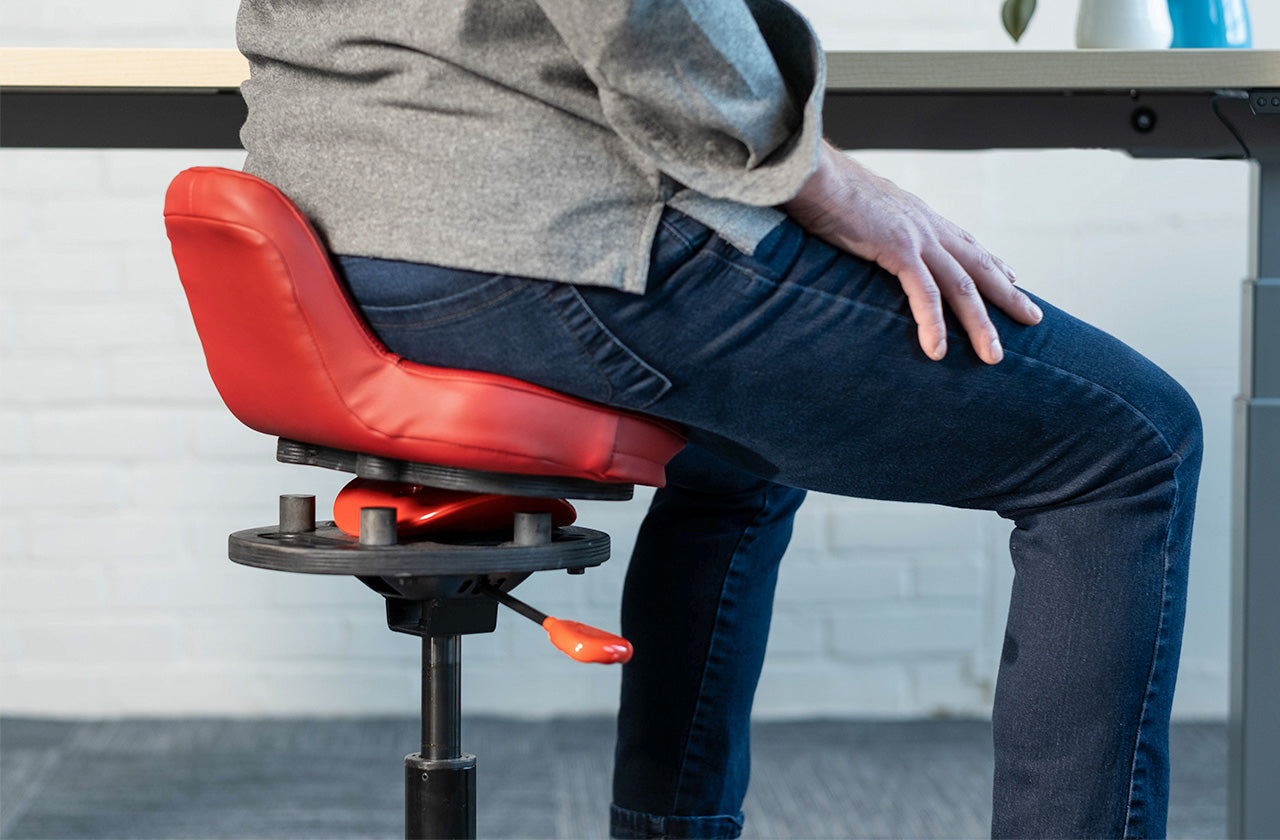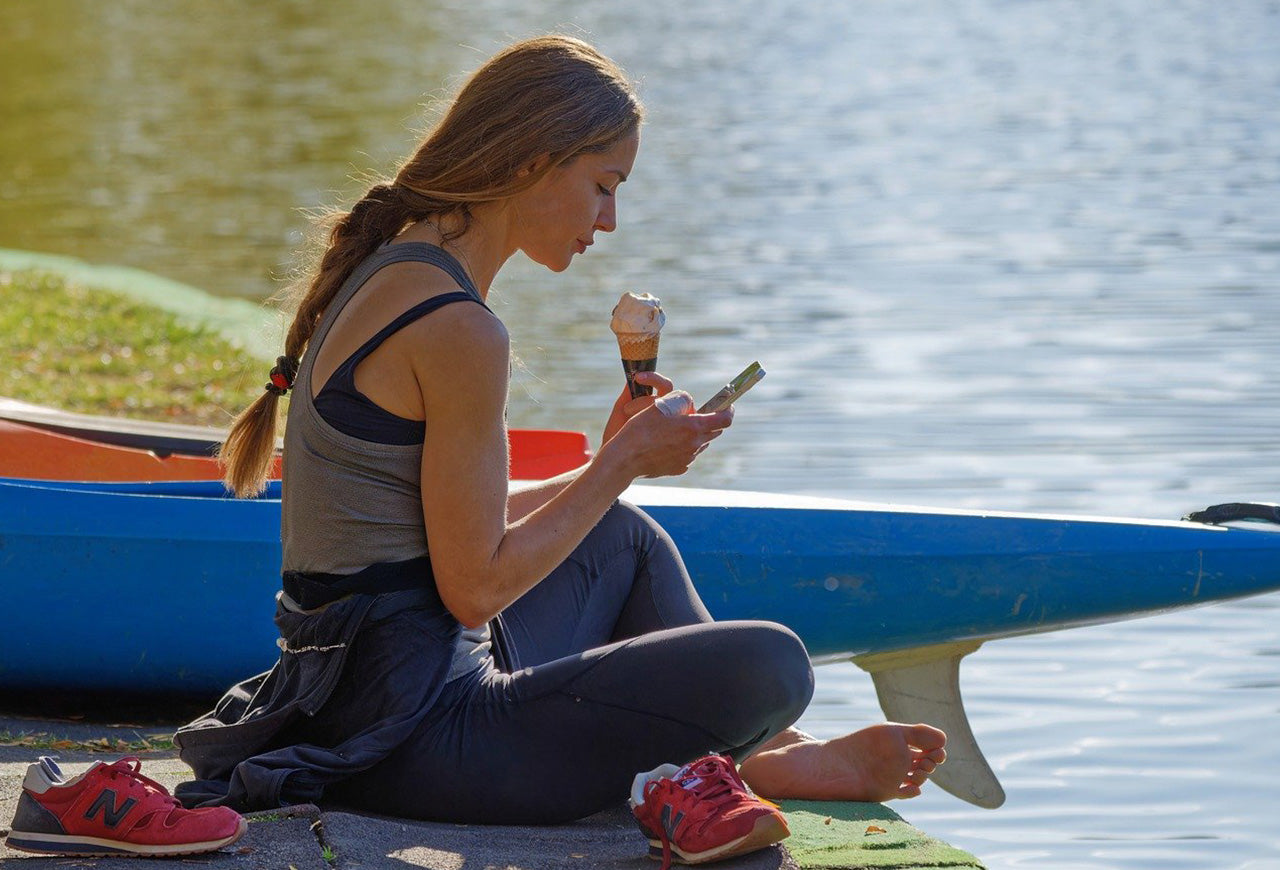We all know that exercise is important, but if health is the goal, it turns out that minimizing sedentary time may be even more important.
It may seem surprising that “exercising” and “avoiding sedentary behavior are even somehow different things: after all, while one is exercising one isn’t sedentary, so the terms must at least be related. Yes, they’re related, but it turns out that one can exercise vigorously for an hour or two a day but still be considered sedentary if the rest of the day is spent sitting immobile at a desk. It’s as though there your body keeps two different ledgers: one for exercise, which improves performance, and a second for avoiding sedentary behaviors, which improves health lengthens lifespan.
This distinction between exercise and non-sedentary is crucial, because the harms caused by inactivity are not reversed by bouts of exercise. That is, even vigorous exercise can’t undo the biochemical harms caused by prolonged periods without physical activity.1
Just how bad is sedentary time? A recent editorial in the prestigious journal BMC Public Health notes: “The preference for engaging in sedentary behavior has paralleled the increase in the prevalence of multiple chronic diseases (e.g. type 2 diabetes, cardiovascular disease and obesity) and their associated complications (e.g., sarcopenia, impaired physical function and frailty).” The authors go on to emphasize the singular importance of avoiding sedentary behavior, because it is a modifiable risk factor: “As these non-communicable diseases account for 74% of all global deaths, of which 40% occur before the age of 70, reiterating the importance of modifiable risk behaviors (e.g., sedentary behavior) for the prevention of morbidity and premature mortality is an ongoing priority.”2
The distinction between exercise and avoiding sedentary behavior is well understood by researchers, but has been slow to filter through to governmental recommendations which still emphasize exercise. Current recommendations are for “150 minutes of moderate-to-vigorous intensity physical (MVPA) per week”3. Encouragingly though, recently public health guidelines have begun to independently target sedentary time, and now recommend “movement snacks” throughout the day. These “snacks” typically involve getting up from one’s desk and walking just a bit every 30 minutes.4
Movement snacks seem like a simple solution to a serious problem, but as sometimes happens with simple solutions, in practice problems can arise. For example, it can be hard for people to remember to get up from their desks and move every 30 minutes, and even if reminded by an app, many people have work to do, and constant interruptions can be annoying, and eventually may be ignored all together.
Chair based exercises are another approach to injecting more movement into one’s sedentary day. These routines became popular in the early 2000’s and interest spiked during the pandemic because they provided a way for office workers to incorporate movement into their largely seated daily routines. And there is evidence that these routines can increase upper extremity strength and lower extremity function5. However, to be effective such exercise programs require daily engagement and so in practice maintaining motivation has proven to be a problem for many people.
Because reminders to get up and go for a walk or to do one’s exercise routine haven’t been well received, attempts have been made to make sitting itself active. For example, tiny under desk stationary bicycles that one can peddle are now for sale on Amazon. And, perhaps in a sign of our times, electric self-peddling devices can also be had; sort of an under-desk e-bike6. While this might seem to miss the point, mechanical devices to move our extremities automatically, so called “continuous passive motion (CPM) machines” have long been a part of rehab after orthopedic operations. However, the role of such CPM machines in health and cardiovascular conditioning hasn’t been studied, so we don’t know if such devices provide any health benefits at all.
Approaches to making sitting itself more active that have been studied include movable bars elastically suspended under one’s desk (e.g. FootFidget) as well as chairs with seats that are slightly unstable (e.g. CoreChair). In one study these two devices were found to increase metabolic work by 20% to 30% respectively, so it seems clear that this approach can work.7
Note that even modestly unstable chair seats can inspire exuberant movement. For example, here’s a clip from an enthusiastic active sitter:
Although it hasn’t been studied, it’s likely that combining sitting on a slightly unstable chair with placing one’s feet on an unstable surface will require more muscular engagement than either strategy alone. I’ve been experimenting with this last approach, and I find it quite helpful. It simultaneously inspires balanced posture and movement without being too distracting. A variety of active chairs are available (CoreChair in Canada, MiShu and Swopper in Germany, and QOR360 in the US; full disclosure, I’m the one of the founders of QOR360) and there are also any number of unstable surfaces one can put on the floor under one’s desk. Even an inexpensive wobble board from Amazon does nicely. I recently was introduced to a novel device (MoveMate, from an innovative Canadian startup) that provides a particularly engaging, even amusing, sort of movement, but any device that helps the feet stay active will help.
Note that keeping the feet and legs active can actually help a lot. Although sitting on a chair with an unstable seat requires engagement of the leg muscles to simply to stay seated, specifically Involving the muscles of calves by making the feet unstable brings additional benefits. This is because the soleus muscle of the calf (the muscle just deep to the gastrocnemius muscle) has a privileged sort of biochemistry that exerts an outsized effect on metabolic rate as well as glucose and lipid regulation. A paper published recently by Hamilton and co-workers explains why this is so8, but in brief, activity of the soleus muscle uniquely raises local oxidative metabolism to high levels for hours without fatigue, even in unfit volunteers. The authors conclude: “Targeting a small oxidative muscle mass of the soleus muscle (∼1% body mass) with local contractile activity is a potent method for improving systemic metabolic regulation while prolonging the benefits of oxidative metabolism.”
Of course, the best approach to avoiding the health risks that sitting poses is an “all of the above” strategy. That is, sit less and get up often. But, if you must sit for prolonged periods, you can still keep moving by switching to a chair that by design will keep you moving, and perhaps add in an under-desk device that will keep your feet and ankles busy as well.
Bottom line: even if you can’t sit less, with a little rejiggering of your work space you can arrange to to move more without rearranging your life. And although it’s just a guess, combining unstable feet with an unstable seat might really boost one’s metabolic rate and health, all without missing an email.
1 Too Much Sitting: The Population-Health Science of Sedentary Behavior
2 Sedentary behaviour and disease risk
3 World Health Organization 2020 guidelines on physical activity and sedentary behaviour
4 Rx for Prolonged Sitting: A Five-Minute Stroll Every Half Hour
5 The Effect of Chair-Based Exercise on Physical Function in Older Adults: A Systematic Review and Meta-Analysis
6 Gugttr Under Desk Elliptical Machine, Ellipse Leg Exerciser for Seniors
7 Chair-based fidgeting and energy expenditure
8 A potent physiological method to magnify and sustain soleus oxidative metabolism improves glucose and lipid regulation





Leave a comment
All comments are moderated before being published.
This site is protected by hCaptcha and the hCaptcha Privacy Policy and Terms of Service apply.